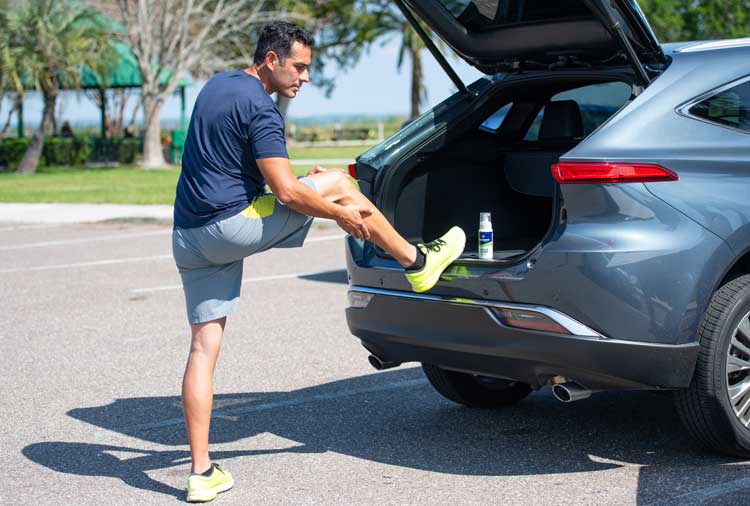
Defeat the Discomfort: Tips to Help Avoid Leg Cramps
If you’ve ever been woken up in the middle of the night by a sudden leg cramp, you know just how unsettling these muscle spasms can be. That tight, knotted feeling in your calf or thigh can throw a wrench into your daily routine. Fortunately, there are simple strategies that may help you avoid these incidents and alleviate the discomfort when they do occur. Here are some key tips to keeping your muscles relaxed and cramp-free.
1. Hydrate
Keeping well-hydrated is a pivotal part of maintaining muscle health. Water helps keep the right amount of electrolytes in our bodies–critical for healthy muscle function. Dehydration can disrupt this balance, potentially leading to muscle cramps and spasms. Make sure you’re drinking water throughout the day, with an emphasis on hydration during physical activity and on warm days.
2. Adopt a Nutrient-Rich Diet
Your diet can be one of your strongest allies in helping ward off leg cramps. Consuming foods rich in potassium, calcium, and magnesium – such as bananas, oranges, dairy, dark leafy greens, and nuts – may help keep your muscles nourished and less prone to involuntary contractions. Consult a dietician or your healthcare provider for guidance on a healthy diet that is right for you.
3. Regular Stretching
Stretching promotes flexibility and reduces muscle tension, making it an important preventive measure against cramps. Regularly stretching your leg muscles, particularly before and after exercise and before bedtime, can help keep spasms at bay. Activities like yoga, which incorporate gentle stretching of the calves, thighs, and feet, can also be beneficial. Consult your doctor or healthcare provider before beginning a stretching routine to make it is right for you.
4. Find a Balanced Exercise Routine
Regular exercise can bolster muscle strength and flexibility, helping reduce the risk of cramps. However, it’s important not to overdo it. Overworking your muscles can lead to fatigue, which in turn may trigger spasms. Developing a balanced exercise regimen that aligns with your fitness level is key. Consult your doctor or healthcare provider before beginning a new exercise routine to make sure it is right for you.
5. Choose the Right Footwear
Footwear that doesn’t properly support your feet can cause strain on your leg muscles, potentially triggering cramps. Select shoes that provide good arch support, ample cushioning, and enough room for your toes.
While adopting these strategies may lessen the likelihood of leg cramps, there may still be times when a spasm strikes. For such instances, Theraworx for Muscle Cramps is here to help. Click here to learn more about the Theraworx product that may be right for you.